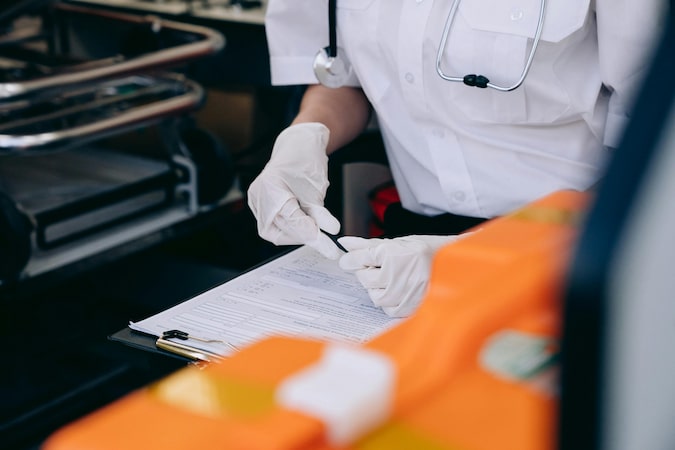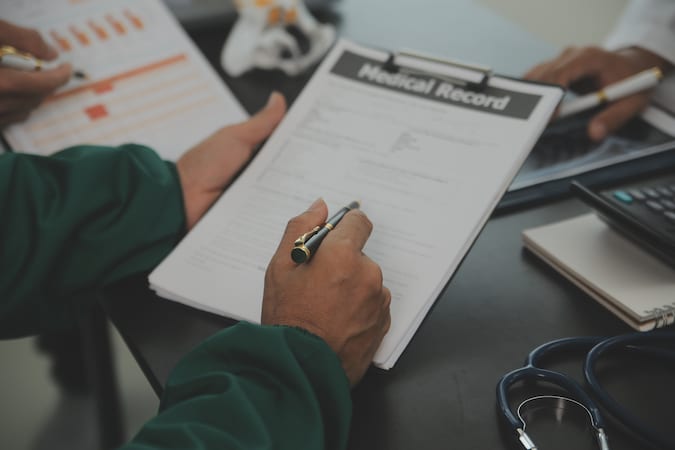
Emergency Contact Information Sheet: A Comprehensive Guide

An emergency contact information sheet is crucial for quick access to vital details during medical emergencies. This guide explains how to create, maintain, and effectively use your emergency contact information sheet.
In emergencies, having a well-organized contact sheet can save time and ensure you get the right care. This article will cover what an emergency contact sheet is, why it’s important, how to create one, and where to keep it. Plus, we’ll provide practical tips and a downloadable form to help you get started.
Key Takeaways:
- Understand the purpose of an emergency contact information sheet.
- Learn the essential elements to include.
- Discover how to create and update your sheet effectively.
- Get tips on where to store and how to maintain your sheet.
What Is an Emergency Contact Information Sheet?

An emergency contact information sheet is a document that provides critical information about an individual during a medical emergency. Its purpose is to ensure that first responders and healthcare providers have immediate access to necessary details to offer prompt and accurate care.
Key Components:
- Personal Identification: Name, address, date of birth, and insurance information.
- Medical History: Current conditions, past illnesses, and relevant health information.
- Emergency Contacts: Names and phone numbers of family members, friends, or caregivers.
- Medication List and Allergies: Details of current medications, dosages, and any known allergies.
Having a complete and accurate emergency contact information sheet can make a significant difference in emergency situations.
Why You Need an Emergency Contact Information Sheet
An emergency contact information sheet offers numerous benefits:
- Quick Access: Provides immediate access to crucial information for first responders, which can improve the speed and quality of care.
- Improves Communication: Facilitates clear communication between emergency personnel and your family, reducing confusion.
- Prevents Errors: Minimizes the risk of mistakes due to miscommunication or missing information.
Case Study: John Doe had a heart attack at home. Because he had a detailed emergency contact sheet, paramedics quickly accessed his medical history and current medications, allowing for immediate and effective treatment.
Key Elements to Include in Your Emergency Contact Information Sheet
To ensure your emergency contact information sheet is comprehensive, include the following elements:
- Personal Identification Information: Include your full name, address, phone number, and insurance details.
- Medical History: List current and past medical conditions, surgeries, and other relevant health information.
- Emergency Contacts: Provide contact details for primary and secondary emergency contacts, including family members, friends, and caregivers.
- Medication List and Allergies: Include a complete list of medications, dosages, and any known allergies.
These elements ensure that all necessary information is available when needed.
How to Create Your Emergency Contact Information Sheet
Creating an effective emergency contact information sheet involves several steps:
- Gather Information: Collect all relevant personal, medical, and contact details.
- Organize Data: Use a clear format with headings and bullet points for easy readability.
- Use Templates: Download and use templates to structure your information efficiently.
- Review and Update: Regularly review and update the sheet to maintain accuracy.
Tools and Resources: Download a customizable emergency contact information sheet here to help you get started.
Where to Keep Your Emergency Contact Information Sheet

To be effective, your emergency contact information sheet must be easily accessible. Consider these options:
- In Your Wallet or Purse: Carry a copy in a secure location, such as a plastic sleeve.
- On Your Phone: Store a digital copy in a secure app or note-taking tool.
- At Home: Place a printed copy in a designated spot, such as on your refrigerator or near your front door.
Ensuring that your emergency contact information sheet is accessible helps you respond quickly in a crisis.
Updating Your Emergency Contact Information Sheet
Regularly updating your emergency contact information sheet is crucial to ensure that all details are current. Here’s how:
- Review Regularly: Check and update your sheet at least once a year or whenever there is a change in your health status or emergency contacts.
- Adjust for Changes: Make necessary adjustments when you start or stop medications, change doctors, or update personal information.
By keeping your information current, you ensure that it remains accurate and useful in emergencies.
Common Mistakes to Avoid When Creating an Emergency Contact Information Sheet
Avoid these common errors when preparing your emergency contact information sheet:
- Errors in Information Entry: Double-check all entries to avoid mistakes that could affect emergency care.
- Overlooking Important Details: Ensure all relevant medical information, including recent changes, is included.
By paying attention to these details, you can create a more reliable and effective emergency contact information sheet.
Final Thoughts
Having an up-to-date emergency contact information sheet is essential for managing medical emergencies effectively. It ensures that critical information is readily available, which can significantly impact the quality of care you receive. Download and complete our form today to be better prepared for any unexpected situations.
Frequently Asked Questions
What should be included in an emergency contact sheet?
An emergency contact sheet should include personal identification information, medical history, emergency contacts, and details of medications and allergies.
How can I ensure my emergency contact sheet is up-to-date?
Regularly review and update your sheet, especially when there are changes in your health status or emergency contacts.
Where should I keep my emergency contact sheet?
Store your sheet in easily accessible places such as your wallet, phone, and a designated spot at home to ensure it can be quickly retrieved in an emergency.
Sources:
- Centers for Disease Control and Prevention. (n.d.). Emergency preparedness and response. CDC
- American Red Cross. (n.d.). Emergency preparedness. American Red Cross




